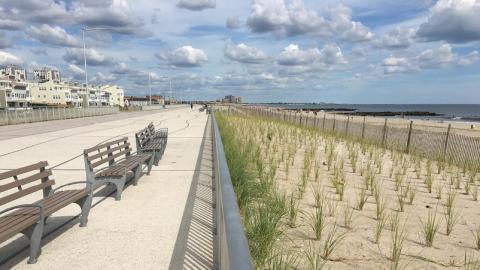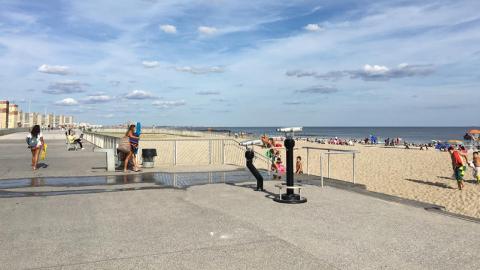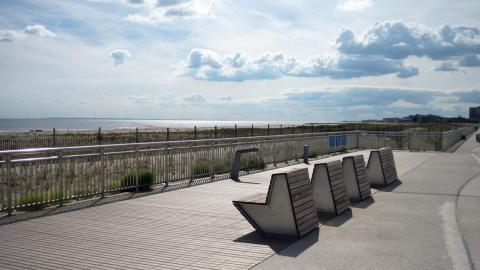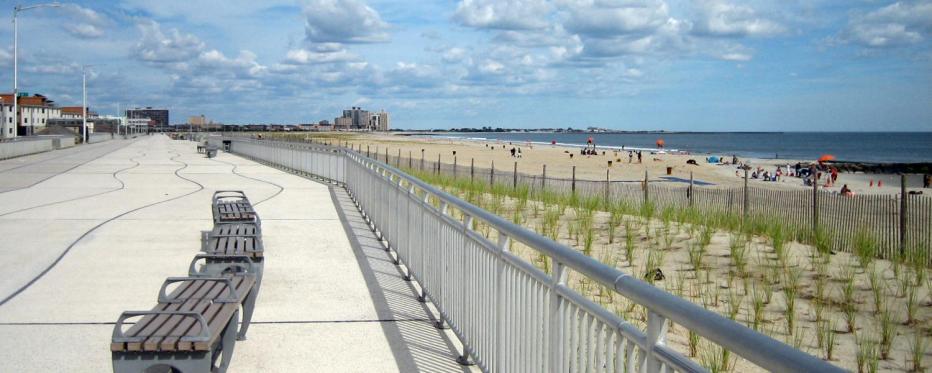
Project Overview
In October of 2012, Superstorm Sandy hit the Eastern Seaboard of the U.S., destroying thousands of businesses, homes, public amenities and regional infrastructure, including the iconic, wooden Rockaway Boardwalk in Queens, New York.
The New York City Economic Development Corporation and the City’s Department of Parks and Recreation, working with the U.S. Army Corps of Engineers (USACE), commissioned a team to reimagine the approximately five miles of beachfront with a resilient, creative vision.
Jacobs, RBA and WXY led the design of the replacement boardwalk and associated access points from Beach 19th Street to Beach 126th Street to be more storm resilient and compatible with the USACE beach nourishment and protection project.
The new boardwalk, completed in May 2017, is the longest and largest resiliency project completed to date by the City of New York. The project advanced with the goal of meeting stringent design criteria, including replacing the formerly wooden structure with concrete, while producing a high-quality boardwalk that could be rapidly constructed and opened to the public in stages, beginning in the summer of 2015.
This project uniquely combines resiliency and recreation for a better protected and more active peninsula. The Rockaway Boardwalk design incorporates hard and soft measures to ensure its longevity and resiliency.
Jacobs undertook detailed coastal modeling to determine the effectiveness of USACE beach nourishment and flood protection projects, comparing them to the post- Hurricane Irene and post-Superstorm Sandy beach conditions. The analysis confirmed that the new boardwalk decks will be above the design storm elevations.
-
4.7 mi.
length of replacement boardwalk along the Rockaway Peninsula in Queens
-
3 ft.
elevation of the boardwalk above the FEMA 100-year floodplain
“In New York City, summer isn’t summer without Rockaway Beach. The beautiful new boardwalk is as strong and resilient as the Rockaway communities it serves – and it offers all New Yorkers more space to enjoy the sun and sand.”
What was involved?
Extensive community outreach, an increased attention to aesthetics and an innovative structural design were key success factors.
Water Resources and Ecosystem Management
Jacobs undertook detailed coastal modeling to determine the effectiveness of USACE beach nourishment and flood protection projects, comparing them to the post-Hurricane Irene and post-Superstorm Sandy beach conditions. The analysis confirmed that the new boardwalk decks will be above the design storm elevations.
Design
Jacobs oversaw a team that included civil engineers, landscape architects, urban designers, architects, community outreach specialists, permitting consultants, and experts in the federal funding of post-disaster projects.
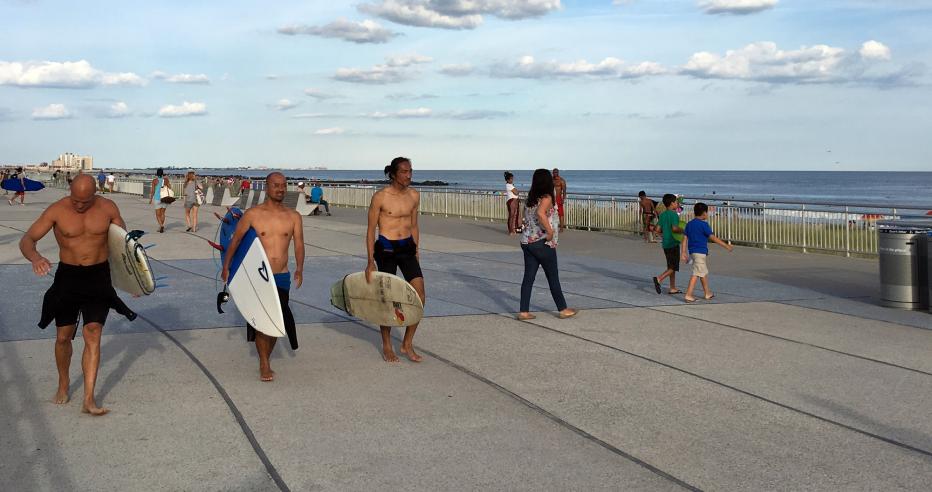
In Detail
Helping a community recover
Through an extensive public outreach process, the residents of the Rockaways made clear that their landmark –their “Main Street” – should be returned to its former greatness as a destination. The new boardwalk has been decked with light blue and sand colored concrete planks undulating to mimic the ocean waves that lie to its south. Designated bike lanes and a multitude of curved, ADA-compliant ramps allow patrons physical and visual access to the waterfront along the 4.7- mile boardwalk.
The Rockaways has a rich history as a recreational destination. The pre-Sandy boardwalk attracted millions of New Yorkers for the summer season each year. The local communities played a central role in the planning and design of the boardwalk. Nine Public Community Engagement Workshops over seven months were held to inform the impacted communities and to assess their priorities. Out of this extensive community planning effort, a cohesive vision for the boardwalk emerged, featuring playgrounds, skate parks and performance spaces tailored to the beach environment.
The new boardwalk is once again a pedestrian main street, a waterfront amenity, and a major recreational destination where residents from all the different communities along the shore mix and mingle. The boardwalk serves as the tie that unites the different neighborhoods that lie on the Rockaway Peninsula. The materials, details, and graphics of the boardwalk are designed to highlight the neighborhoods’ identities and compliment the natural beach environment.
The reconstruction of the boardwalk was key for the sustained economic development of the peninsula. The City of New York put a high priority on reconstructing and improving the boardwalk to help the community recover and to increase the overall attractiveness and value of the area to residents, visitors and investors.
The augmentation/enhancement of the sand dune reinforced by sand fences, plants, and dune walkways was the key environmental aspect of the project, and of great concern to the community since the planted sand dune will act as the first line of defense during storm events. The dune also provides habitat for the piping plovers that are native to the peninsula, along with other ecological species.
The boardwalk features the newest generation of New York City Department of Transportation-approved LED street lights. Custom furnishings, designed by WXY, are made with salvaged wood from the former boardwalk and beach access structures are decked with recycled plastic lumber, an homage to the historical wooden boardwalk. The most dramatic feature of the new boardwalk is quite literally the community’s signature spelled out in 40-foot-high letters using blue planks as pixels to spell out “ROCKAWAYS” over a 4,000-foot length of boardwalk – easily read from the airplanes flying in and out of the nearby John F. Kennedy Airport.















































